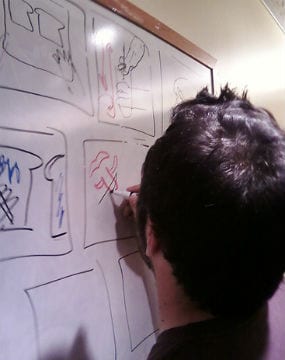 When does a repair call begin? Is it when a customer picks up the phone to dial customer support? Or is it when they first buy the product? Or does the service call actually start much earlier, when a customer first encounters your brand?
When does a repair call begin? Is it when a customer picks up the phone to dial customer support? Or is it when they first buy the product? Or does the service call actually start much earlier, when a customer first encounters your brand?
For that matter, when does it end? Is it when the repairman’s packed up his tools and pulled his van away? When the customer’s filled out a satisfaction survey? Or is it much later, when their neighbor’s asking for a repairman recommendation?
To Sarah Drummond, the co-founder of service design firm Snook, the answer’s clear: Service is a story, like any other, with a beginning, middle and end. And the repair itself is just one part of that story.
“Most people start in the middle,” Drummond says. “That’s what most people lock on to. But there’s a lot of stuff that needs to happen before and after that in a service.”
But understanding the other two-thirds of the equation is often the key to optimizing an organization’s service offering.
What service design can offer, then, is a way for organizations see what their customer’s “journey” with them really looks like, from the earliest stages through the moment they decide to leave a service, or grow alongside it.
“You want to create one big picture, essentially, that shows all the pain points in delivery,” she says. By storyboarding out what your employees’ and customers’ experience looks like – literally drawing a storyboard – organizations can gain insights about what kinds of tools, or restructuring, need to be introduced to their service’s delivery.
Drummond’s firm does it by rigorously researching how an organization functions: What do the repairperson’s days look like? What problems do front-line staff deal with? What do customers think about the service? What channels do you offer your service through? Then you take those reams of research files back and start trying to make sense of them – to build a narrative story of how an organization’s service really functions.
That creates a blueprint, then it’s time to get creative.
“When I do this [storyboarding] with companies, you can see their jaw drop to the floor,” Drummond says. “They’ve never seen their service like that. It helps people take a really customer-centric approach. And that’s really at the heart of service design – thinking about the customer. It’s a phenomenal tool.”
By drawing it out, Drummond says service designers can start to offer solutions for each pain point. If customers are frustrated by having to call up the service desk to schedule a repair, do you offer a Web-based appointment scheduler?
But that’s not the end. Once a potential solution is worked out, it has to be tested – often time and again. “You recreate the whole experience – just act it out,” Drummond says. “And you document that, see how it works. The first time it’ll fail miserably. And the second time it’ll probably fail alright, and then the third time maybe it’ll work.”
It’s a wonderfully simple way to think about how customers actually interact with a service, and to spot both potential and current problem spots. What does your organization’s story look like?

Share this: